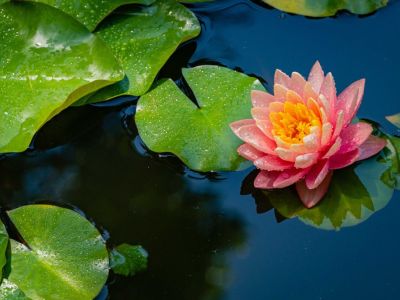Can a Pond Be in Full Sun?
Many people picture a perfect pond ringed by weeping willows and other trees that provide some shade. Ideally, a garden pond will have a mix of sun and shade. Between four and six hours of full sun should be fine. The right balance of sun and shade makes for a healthy pond for a few reasons. Fish benefit from some cooling shade. A little shade will also keep algae growth under control. Too much sun, and it will take over. You can also find a mix of shade and sun plants to grow in your pond if you have both.
Full Sun Aquatic Plants
For the sunnier areas of your pond, there are plenty of options. Use plants around the edges of the pond, but also select some full sun floating pond plants. These will make your pond more attractive and help keep out algal growth.
Water Lily. Water lilies thrive in sun. They also help solve some of the problems associated with a full-sun pond. Their flat leaves provide shade for fish and outcompete algae. Lotus. Lotus plants also float on the pond and enjoy full sun. They’ll provide gorgeous, large blooms for the surface of the pond. Iris. Irises love full sun too, and they tolerate some soggier soil. Plant them around the edges of your pond for spring and early summer color. Rushes. Several types of grass-like rushes will grow around the edges of a pond in full sun, creating habitat for wildlife. Try needle spikerush and corkscrew rush. Pitcher Plant. This is a unique carnivorous bog plant many gardeners overlook. It will grow well on the sunny, wet margins of a pond. Taro. Also known as elephant ears, this tropical plant grows well along pond margins. It can be submerged in water as long as the leaves are above the surface. Canadian Pondweed. For a submersible plant that enjoys full sun, try Canadian pondweed. It helps control algae by removing nutrients from the water. Azolla. This unique plant is a floating fern. It’s green, like most ferns, but when grown in full sun will turn pink to red. This is not native to North America and may be considered invasive. Keep it out of ponds connected to other waterways.
